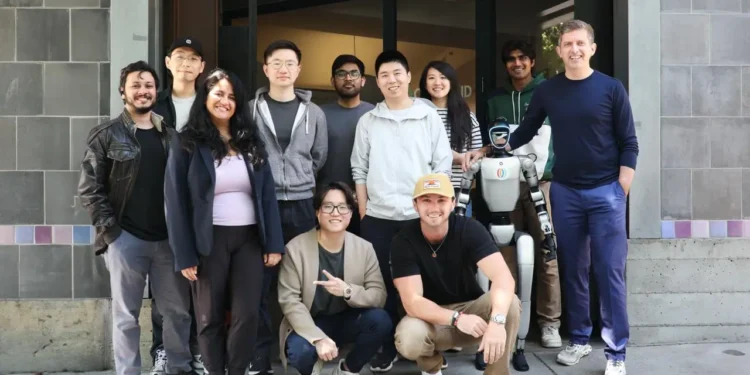A Stanford bioengineering professor wants to solve robotics’ biggest problem. Instead of building better hardware, Jan Liphardt focuses on the missing link that keeps robots trapped in isolated bubbles.
His company OpenMind secured $20 million to build OM1, an operating system that lets any robot work with any other robot. Think Android for the robotics world.
The funding round, led by Pantera Capital, includes backing from Ribbit, Coinbase Ventures, and angel investors. OpenMind plans to use the money to expand its engineering team and get robots talking to each other.
Stanford Professor Tackles Robot Communication Problem
Liphardt spent decades studying data, machines, and decision-making at Stanford University. He noticed robots today face the same problem smartphones had before Android arrived.
“Today’s robots are trapped in single-vendor ecosystems that limit collaboration and can’t adapt to real-world complexity,” Liphardt said. His solution connects all thinking machines through a shared network.
The market for humanoid robots could reach $5 trillion by 2050, according to Morgan Stanley Research. But current robots operate in isolation, each speaking its own language.
OM1 Operating System Powers Any Robot Hardware
OpenMind’s OM1 platform works with robots from any manufacturer. The hardware-agnostic system lets robots perceive, adapt, and act in human environments without being locked to specific brands.
The company also built FABRIC, a protocol that lets robots verify each other’s identity and share information safely. This creates the equivalent of the internet for robots.
“If AI is the brain and robotics is the body, coordination is the nervous system,” Liphardt explained. “Without it, there’s no intelligence, just motion.”
OpenMind plans to ship its first fleet of 10 OM1-powered robotic dogs by September. The company will iterate quickly based on user feedback.
Robot Software Market Attracts Major Investment
The robotic software market was valued at $20 billion in 2024 and could reach $150 billion by 2034, growing at 22.4% annually according to Global Market Insights.
“OpenMind’s approach feels obvious in hindsight,” said Nihal Maunder, partner at Pantera Capital. “If we want intelligent machines operating in open environments, we need an open intelligence network.”
Other investors see robots as the bridge between AI and the physical world. “Robotics is going to be the leading technology that bridges AI and the material world, unlocking trillions in market value,” said Casey Caruso, managing partner at Topology.
FABRIC Protocol Enables Robot Collaboration
The FABRIC system works like a trust layer for robots. Machines can understand where they are, who’s nearby, and what to do next without human intervention.
Liphardt gave an example of robots sharing language skills instantly. Instead of teaching each robot different languages individually, they could share this knowledge through the network.
“Humans take it for granted that they can interact with any other human on Earth,” Liphardt said. “Machines are going to be no different.”
The protocol also handles security and verification, making sure robots can trust the information they receive from other machines.
Home Robot Testing Starts This Fall
OpenMind will test its technology in real homes starting this September. The company expects users to provide feedback on what works and what doesn’t.
“We full well expect all the humans that will be hosting these quadrupeds, they’ll come back with a long list of things they didn’t like or they want,” Liphardt said.
The company believes getting robots into people’s hands quickly beats perfecting the technology in labs. This approach helped companies like Facebook and Google improve their products faster.
“The most important thing for us is to get robots out there and to get feedback,” Liphardt explained. “Our goal is to do as many of these tests as we can.”
The robots will use both OM1 and FABRIC to coordinate with other machines and learn from shared experiences across the network.














